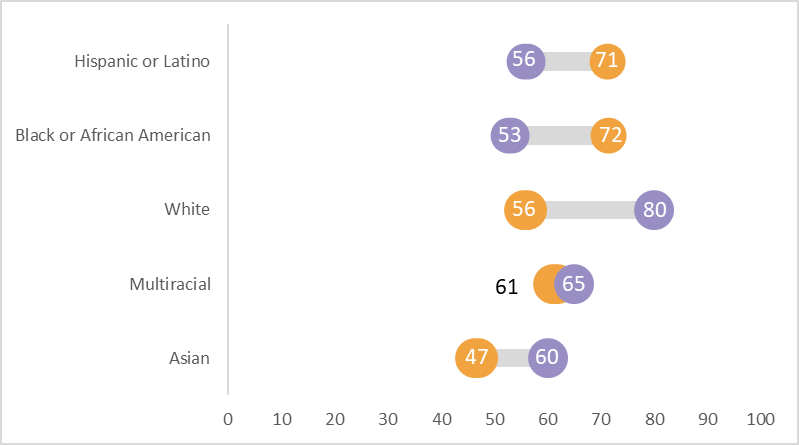Health Equity/Social Determinants of Health 3
Session: Health Equity/Social Determinants of Health 3
433 - Pediatric Research Priorities and Advisory Board Interest among Parents in Chicago: Findings from a Community-based Survey
Saturday, April 26, 2025
2:30pm - 4:45pm HST
Publication Number: 433.6352
Kathryn Kaplan, Ann & Robert H. Lurie Children's Hospital of Chicago, Chicago, IL, United States; Michelle Macy, Ann & Robert H. Lurie Children's Hospital of Chicago, Chicago, IL, United States; Emily Golbeck, Ann & Robert H. Lurie Children's Hospital of Chicago, Chicago, IL, United States; Laiba Bajwa, Ann & Robert H. Lurie Children's Hospital of Chicago, Chicago, IL, United States; Sara Huston, Ann & Robert H. Lurie Children's Hospital of Chicago, Durham, NC, United States; Marie E. Heffernan, Ann & Robert H. Lurie Children's Hospital of Chicago, Chicago, IL, United States; Diana Madden, Ann & Robert H. Lurie Children's Hospital of Chicago, Chicago, IL, United States

Callie Kaplan, MPH (she/her/hers)
Senior Research Scientist
Ann & Robert H. Lurie Children's Hospital of Chicago
Chicago, Illinois, United States
Presenting Author(s)
Background: Community engagement in pediatric research is vital to promoting the health and well-being of children and increasing representation in research participation. The Community and Provider Input for Learning and Transformation (Co-Pilot) initiative at Ann & Robert H. Lurie Children’s Hospital of Chicago is transforming decision-making related to research prioritization at Stanley Manne Children's Research Institute (SMCRI) by meaningfully engaging caregivers. As a first step in this process, a community survey was released to Chicago-area caregivers to gather insights on research priorities.
Objective: To understand the research priorities of caregivers in the Chicago area across the translational spectrum: Basic Science, Clinical Trials, and Community Health.
Design/Methods: We fielded an online survey in Jan 2024 via Qualtrics to caregivers (n=2210) in metro Chicago derived from the Voices of Child Health in Communities panel. The 22-question survey included items on defining community engagement, research topic importance, likelihood to allow child participation in research, interest in an advisory board, and demographics. General descriptive statistics and 2 tests were calculated. Data were stratified by race and ethnicity because of historical research injustices against people of color which influences trust and engagement, and by child health status.
Results: Among the 489 survey respondents (RR=22%), most spoke English at home (94%), lived in the city (92%), had < 3 children (78%), and had healthy children (64%). Community health research was ranked as a top priority (40%), followed by basic science (36%) and clinical trials (24%). Research sub-topic prioritization significantly differed based on race and ethnicity and child health status (Table 2). Across all topics, prioritization did not always align with respondent likelihood to allow their child to participate in research. That gap, and whether prioritization or likelihood had higher endorsement differed by race and ethnicity (Visual 1). Importantly, 45% of respondents said that they would be interested in joining a future institution-level research advisory board, particularly to inform research ethics guidelines/practices.
Conclusion(s): Among responding parents in metro Chicago, perspectives on research prioritization does not always align with likelihood to allow their child to participate in research. Parents are interested in participating in decision-making at the research institute level and their involvement may improve equitable pediatric research engagement and community buy-in.
Demographics and Child Health Status of Participants (N = 479) in Co-PILOT Community Survey

Prioritization of Research Pillar Topics and Sub-topics among Parents in CO-Pilot Community Survey Panel Stratified by Racial and Ethnic Groups and Child Health Status
 Note:American Indian/Alaskan Native and Middle Eastern/Northern African were removed due to small n
Note:American Indian/Alaskan Native and Middle Eastern/Northern African were removed due to small n* chi-square p-value for race/ethnicity differences <.05; +chi-square p-value for health status difference <.05
The degree to which the importance of home environment surveys (n=373) and the likelihood of participation in a home monitoring study (n=258) is aligned differs by racial and ethnic group.
 Note: This is an example of one of many importance: likelihood visuals
Note: This is an example of one of many importance: likelihood visuals Note: American Indian/Alaskan Native and Middle Eastern/Northern African were removed due to small n

